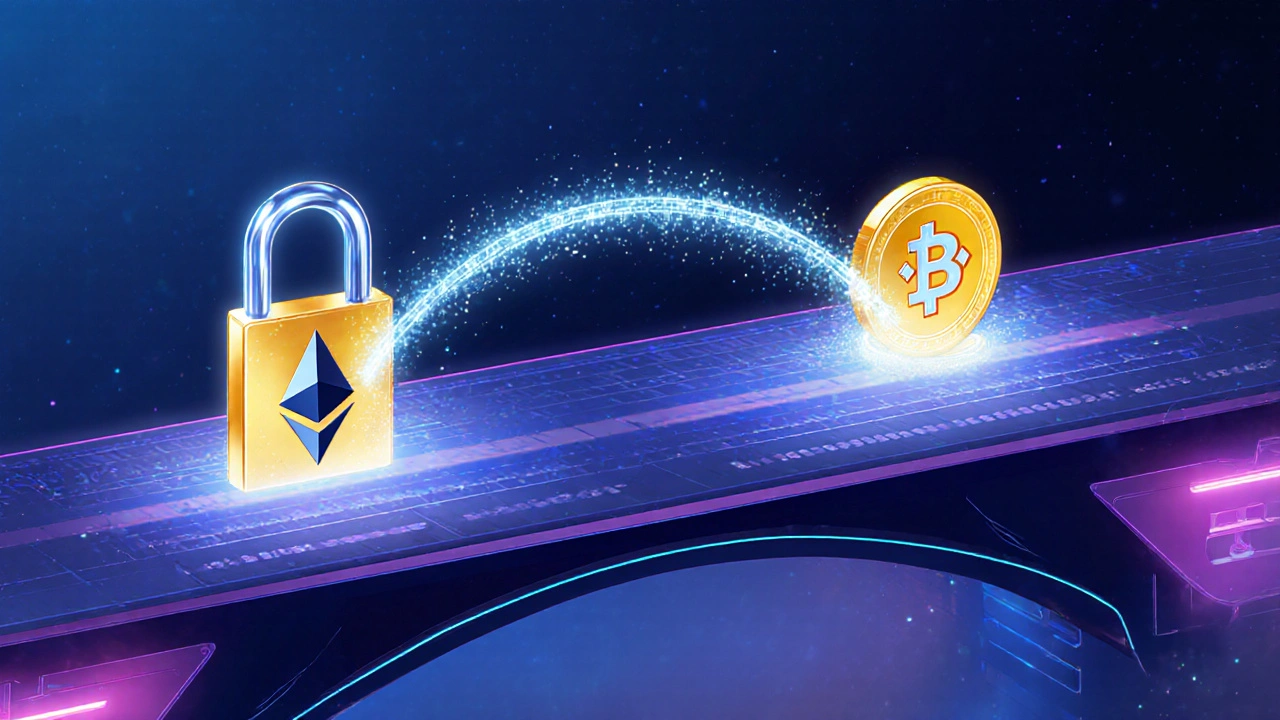Blockchain & Cryptocurrency: Your Practical Resource Hub
When working with Blockchain & Cryptocurrency, a digital ledger system combined with native digital assets. Also known as crypto, it powers everything from simple token transfers to complex financial contracts. Token bridge, a tool that moves assets across different ledgers enables cross‑network swaps, while a Perpetual swap, a futures‑like contract without an expiry date lets traders stay exposed to price moves forever. Sidechain, an auxiliary chain linked to a mainnet offers faster, cheaper processing for specific use‑cases. Together, these pieces form a vibrant ecosystem that we’ll unpack in the posts below.
Why token bridges matter and how they work
Blockchain & Cryptocurrency encompasses token bridging, a core method for achieving interoperability. A token bridge requires a cross‑chain bridge that locks assets on the source chain and issues wrapped tokens on the destination chain. Popular examples connect Ethereum to Binance Smart Chain (BSC), letting users move DeFi tokens without selling. Security is a major concern: auditors check the bridge’s smart‑contract code, and users watch for audit reports before depositing. Gas fees on the source chain affect the cost of moving assets, while waiting times depend on block confirmations. Understanding these variables helps you choose a bridge that balances speed, cost and safety.
Beyond Ethereum and BSC, newer bridges link Polkadot, Solana and Avalanche, expanding the pool of usable assets. Each addition introduces its own consensus model—Proof‑of‑Stake, Tendermint, or others—impacting finality and transaction speed. By comparing consensus mechanisms, you can predict how quickly a bridge will confirm transfers. The bridge’s UI also matters: clear status indicators reduce the risk of “stuck” transfers, and built‑in troubleshooting guides streamline recovery if something goes wrong.
When you grasp how token bridges function, you unlock the ability to use assets across multiple DeFi platforms, diversify liquidity sources, and avoid unnecessary swaps that eat into your returns.
Perpetual swaps: endless exposure without expiry
Perpetual swaps are a flagship product in the crypto derivatives market. They let traders maintain a position indefinitely, paying or receiving a funding rate that aligns the contract price with the underlying spot market. Leverage—often 10x, 20x or more—amplifies both gains and losses, so risk management tools like stop‑loss orders become essential. Funding rates are calculated every eight hours; a positive rate means longs pay shorts, while a negative rate flips that relationship.
Because perpetual swaps don’t settle, traders can roll positions without the friction of rolling futures contracts. This continuous exposure is attractive for hedgers who want to lock in price risk, but it also demands constant monitoring. Platforms typically display real‑time funding rates, open interest, and liquidation levels, giving you the data needed to decide when to unwind or add margin.
Understanding the mechanics—margin requirements, liquidation triggers, and the impact of market volatility—lets you use perpetual swaps as a strategic tool rather than a gamble.
Sidechains: scaling the main network
Sidechains provide a parallel environment where developers can experiment with custom consensus rules, token standards, and gas pricing without congesting the mainnet. A sidechain is linked to the primary blockchain via a two‑way peg, often implemented with a token bridge, allowing assets to move back and forth securely.
Consensus choices vary: some sidechains use Proof‑of‑Authority for faster block times, while others adopt delegated Proof‑of‑Stake to keep decentralization intact. Smart contracts on sidechains can interact with mainnet assets, enabling use‑cases like NFT minting with low fees or high‑frequency DeFi trades that would otherwise be costly.
Interoperability between sidechains and the main chain is critical. Standards such as the Inter-Blockchain Communication (IBC) protocol simplify cross‑chain messaging, making it easier for developers to build multi‑chain applications. When you combine sidechains with bridges and perpetual swaps, you get a flexible stack that can handle both high‑throughput transactions and complex financial products.
Beyond the basics: the wider crypto ecosystem
The world of Blockchain & Cryptocurrency doesn’t stop at bridges, swaps or sidechains. Decentralized Finance (DeFi) platforms rely on these components to offer lending, staking and liquidity mining. Staking lets you earn rewards by securing a network, while liquidity pools let you earn fees by providing capital for swaps.
Wallets—hardware and software—store private keys that control your assets across all these layers. Choosing a wallet with multi‑chain support means you can manage tokens on Ethereum, BSC, sidechains and even layer‑2 solutions from one interface. Security audits, bug bounty programs and community governance further shape the trust landscape.
NFTs have also found a home on sidechains, where minting costs are lower and transaction speed is higher. This opens up new possibilities for creators who want to reach audiences without the high gas fees of popular mainnets.
Tools, analytics and best‑practice tips
Effective use of token bridges, perpetual swaps and sidechains depends on having the right tools. Bridge dashboards show real‑time status, transaction hashes and audit certificates. Trading platforms for perpetual swaps provide heatmaps of funding rates and leverage ratios, while analytics suites track on‑chain metrics like transaction volume, active addresses and gas price trends.
Security best practices include using multi‑factor authentication on your wallet, keeping private keys offline, and double‑checking contract addresses before approving any bridge transaction. Regularly reviewing audit reports and community feedback helps you stay ahead of potential exploits.
By combining these practical resources with a solid understanding of the core concepts, you’ll be ready to navigate the fast‑moving world of Blockchain & Cryptocurrency with confidence.
Below you’ll find a curated set of guides that dive deeper into each topic—step‑by‑step tutorials, risk‑aware trading advice and clear explanations of how sidechains boost scalability. Explore the collection and start applying what you learn to real‑world scenarios today.
RegTech for Crypto: Automated Compliance, On-Chain Reporting, and Risk Scoring
Posted by Michael Griffin on Nov, 20 2025

RegTech for crypto automates AML, KYC, and on-chain reporting using blockchain analytics to meet global regulations. With tools like Chainalysis and Scorechain, exchanges reduce compliance costs by 50% and avoid multi-million dollar fines.
What Is a DEX in Crypto? Simple Guide to Decentralized Exchanges
Posted by Anna Fenton on Nov, 1 2025

A DEX in crypto is a decentralized exchange that lets you trade cryptocurrencies directly from your wallet without a middleman. No KYC, no custody risks, and access to thousands of tokens. Learn how it works, popular platforms, and key risks.
How to Buy NFT with Ethereum: A Step‑by‑Step Guide
Posted by Lauren DeCorte on Oct, 18 2025

A practical step‑by‑step guide showing how to set up a wallet, get ETH, choose a marketplace, and safely complete an NFT purchase on Ethereum.
How Sidechains Work in Blockchain: A Simple Guide
Posted by Kayla Susana on Sep, 30 2025

Learn what sidechains are, how they link to main blockchains, the role of bridges, consensus choices, and when to use them-all in plain English.
What is a Perpetual Swap in Crypto? Explained Simply
Posted by Kayla Susana on Sep, 19 2025

Learn what a perpetual swap is, how it works in crypto, its key components, benefits, risks, and how to start trading.
How to Bridge Tokens Between Blockchains - Step‑by‑Step Guide
Posted by Kayla Susana on Sep, 18 2025

Learn how to safely move tokens across different blockchains with a clear step-by-step guide, bridge selection tips, security best practices, and troubleshooting advice.
